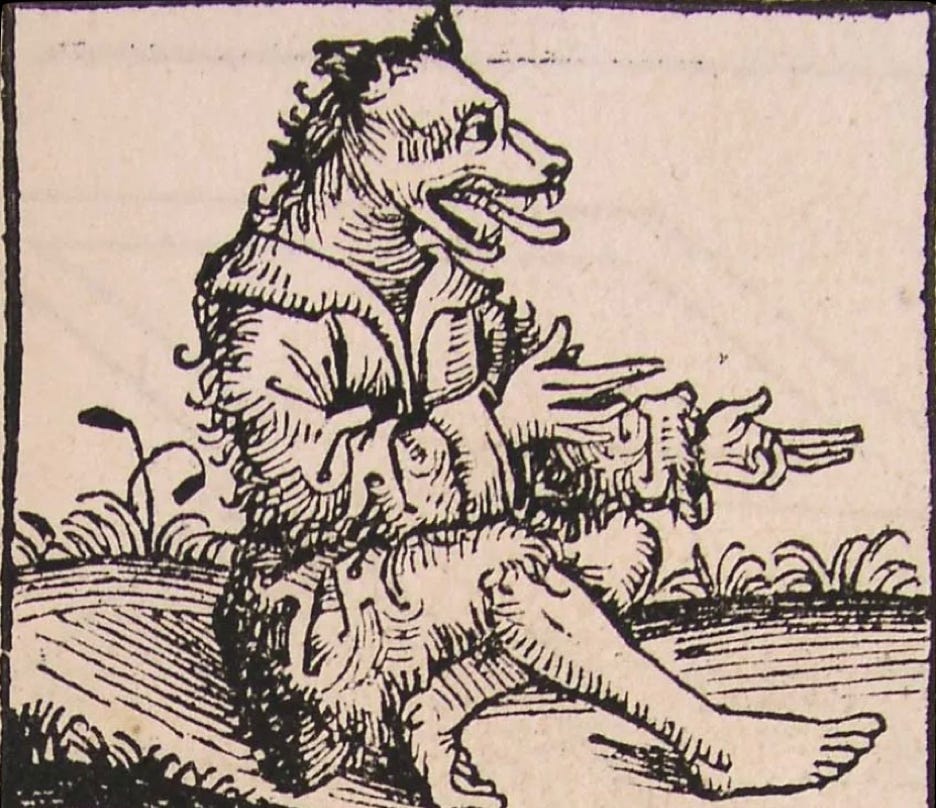
#45 - Cynocephali
Summary
Our guest, Karl Steel, delves into the fascinating topic of the Cynocephali, or dog-headed beings, as explored through medieval texts and cultural representations. The discussion highlights the unique Letter on the Cynocephali, the historical context of these beings, and their implications for the understanding of rational souls. Our conversation also touches on dogs in medieval culture, particularly in relation to the figure of Saint Christopher, and the visual traditions surrounding these creatures. Karl also touches on creation stories and on domestication as a marker of humanity.
Keywords
Cynocephalus, medieval studies, dog-headed beings, animal-human hybrids, posthumanism, history, literature, culture, St. Christopher, rational souls, the bestiary, language, humanity, domestication, creation stories, early modern thought, civilization, animal-human hybrids
Bibliography
“Passio sancti Christopheri Martyris,” Analecta Bollandiana10 (1891): 395–96
“Saint Christopher,” from the Nowell manuscript, trans. from Old English Poetry Project, trans. Ophelia Eryn Hostetter.
“The Acts of Saints Andrew and Bartholomew among the Parthians." The Contendings of the Apostles, ed. and trans. E. A. Wallis Budge. Vol. 2. London: Henry Frowde, 1899.
Aethicus Ister, Die Kosmographie des Aethicus, ed. Otto Prinz (Munich: Monumenta Germaniae Historica, 1993).
Dittmar, Pierre-Olivier, and Maud Pérez-Simon, ed and trans. Les Monstres des hommes : un inventaire critique de l'humanité au XIIIe siècle. Champion: Paris, 2024.
Dussère, Carolyn and J.W. Thomas, trans., The Legend of Duke Ernst. University of Nebraska Press: Lincoln, 1979.
Ratramnus of Corbie, “Letter on the Cynocephali,” trans. Paul Edward Dutton, in Carolingian civilization: a reader. 2ndEdition. Toronto: University of Toronto Press, 2004: 452-55.
-
Bruce, Scott A. “Hagiography as Monstrous Ethnography: A Note on Ratramnus of Corbie’s Conversion of the Cynocephali.” In Insignis Sophiae Arcator: Medieval Latin Studies in Honour of Michael W. Herren on His 65th Birthday, edited by Gernot R. Wieland, Michael W. Herren, and Carin Ruff, 45–56. Turnhout: Brepols, 2006.
Friedman, John Block. The Monstrous Races in Medieval Art and Thought. Syracuse: Syracuse University Press, 1981.
Friedrich, Jennie. "Saint Christopher's Canine Hybrid Body and its Cultural Autocannibalism." Preternature: Critical and Historical Studies on the Preternatural6.2 (2017): 189-211.
Leclercq-Marx, Jacqueline. “L’humanisation des hybrides mi‑hommes, mi‑bêtes en question(s).” Frontière·s8 (2023): URL : http://journals.openedition.org/frontieres/1603
Lecouteux, Claude. “Les Cynocéphales : Étude d’une tradition tératologique de l’antiquité au XIIe s.” Cahiers de civilisation médiévale24 (1981): 117–29.
Matter, E. Ann "The Soul of the Dog-Man: Ratramnus of Corbie between Theology and Philosophy." Rivista di storia della filosofia61.1. (2006): 43-53.
Newall, Venetia. “The Dog-Headed Saint Christopher.” In Folklore on Two Continents: Essays in Honor of Linda Dégh, edited by Linda Degh, Nikolai Burlakoff, Carl Lindahl, and Harry Gammerdinger, 242–49. Bloomington: Trickster Press, 1980.
Ottewill-Soulsby, Sam. "City of Dog." Journal of Urban History47.5 (2021): 1130-1148.
Steel, Karl. “Centaurs, Satyrs, and Cynocephali: Medieval Scholarly Teratology and the Question of the Human.” In The Ashgate Research Companion to Monsters and the Monstrous, edited by Asa Simon Mittman and Peter J. Dendle, 257–74. Farnham, England: Ashgate, 2013.
White, David Gordon. Myths of the Dog-Man. Chicago: University of Chicago Press, 1991.
Wood, Ian N. "Where the Wild Things Are." Visions of Community in the Post-Roman World: The West, Byzantium and the Islamic World, 300–1100, ed. Walter Pohl, Clemens Gantner, and Richard Payne. New York: Routledge, 2012: 531-542.